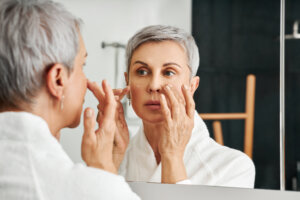Read Full Article HereExperts from one of the country’s largest dermatology practices show how the pandemic uncovered new efficiencies to improve healthcare access and patient experiences.
Taylor Enabnit; Jay Wofford, MD; and Glenn Goldstein, MD
Countless blockbuster movies, such as “Outbreak,” the 1995 film starring Dustin Hoffman, and more recently, Steven Soderbergh’s “Contagion,” center around viruses of epidemic proportions. And while theaters were prepared to handle the wild popularity surrounding a fictional pandemic scenario, no one—including health care professionals or the US government—could have anticipated a real-life pandemic that would infect millions, shut down schools, and shutter businesses.
Many dermatologists encountered difficulties providing timely, in-person appointments during the pandemic because of social distancing requirements. Doctors coming straight out of residency had offers rescinded, scientific activities came to a halt, several small private practices were sold to become part of larger organizations, and a lot of practices fired employees. Even a year later, COVID-19 has been a challenge for the treatment of dermatologic patients, either with skin cancer or severe inflammatory skin disease. Many patients skipped their annual skin cancer screenings in 2020 because of the pandemic. Now, dermatologists are playing catch up, trying to find those patients and make sure they get back on track for annual check-ups.
There is no doubt that many of the effects of COVID-19 on the dermatology industry have been negative, however, the diligent efforts dermatologists made during the last year and a half to adjust to unprecedented conditions have unexpectedly uncovered new efficiencies to help doctors and office staff improve patient experiences and health outcomes. During this critical time, dermatologists have not only focused on ensuring the treatment of high-risk cancers during the crisis but have also played a significant role in identifying bottlenecks in clinical processes and implementing new measures to ensure all patients continue to have access to essential skin health services.
Leaning Into Telehealth
Seeing patients was a challenge for most physicians—not just dermatologists—in the spring and early summer of last year, and the majority of us turned to telehealth. According to Amwell’s 2020 Physician and Consumer Survey, the percentage of physicians using telehealth to see patients spiked from 22 percent in 2019 to 80 percent in 2020. Dermatology is a visual and tactile specialty, and while telehealth offered a better-than-nothing solution for concerned patients who needed to be seen during a lockdown, is it a dealbreaker?
…
How a Large Dermatological Practice Survived the Pandemic
August 2, 2021









